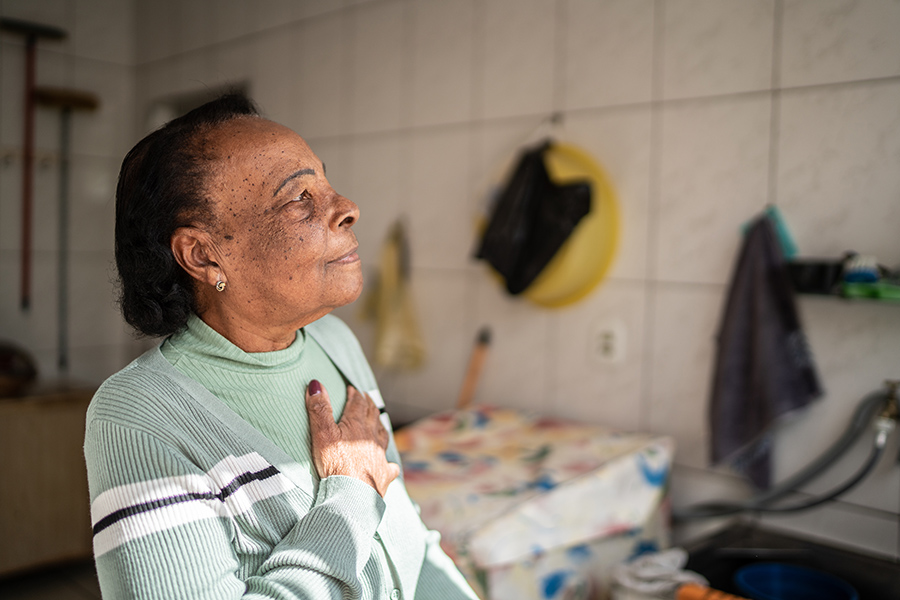October is Spina Bifida Awareness Month, a time dedicated to raising awareness and understanding about this complex and often misunderstood condition.
What is Spina Bifida?
Spina bifida is a neural tube defect that affects hundreds of thousands of individuals around the globe. In fact, each year approximately 1,400 babies born in the U.S. have spina bifida, according to the U.S. Centers for Disease Control and Prevention (CDC). It is essential to shed light on this condition, not only to support those living with it, but also to promote prevention, research, and acceptance.
Spina bifida is a congenital condition that occurs during early pregnancy when the neural tube, the structure that eventually becomes the spinal cord, fails to close properly. This results in a range of disabilities that can vary greatly in severity.
The most common types of spina bifida are myelomeningocele, meningocele, and Spina Bifida occulta.
- Spina Bifida Occulta: This is the mildest form of spina bifida and is often undiagnosed until later in life. In this case, there is a small gap in one or more of the vertebrae, which may or may not cause symptoms.
- Meningocele: In this form, the meninges protrude through an opening in the spine, but the spinal cord remains intact. While individuals with meningocele may have fewer neurological problems than those with myelomeningocele, they still face health challenges.
- Myelomeningocele: This is the most severe form of spina bifida, where the spinal cord and its protective covering (meninges) protrude from an opening in the spine. It often leads to paralysis below the affected area and a lifetime of medical challenges.
What Causes Spina Bifida?
While the exact cause of spina bifida is not entirely understood, there are steps individuals can take to reduce the risk. Prenatal care and early diagnosis are important in providing the best possible outcome for affected individuals. One of the most critical factors is taking folic acid (also known as vitamin B9) before and during pregnancy, as it has been shown to significantly reduce the risk of neural tube defects like spina bifida. It’s estimated that taking folic acid supplements before you conceive and while you’re pregnant may prevent up to 7 out of 10 cases of neural tube defects, such as spina bifida.
Other less common causes that have been linked to causing spina bifida are obesity, diabetes, genetic conditions, and certain medicines.
If you’re not sure whether a medicine you are currently taking could affect your pregnancy, check with your doctor, midwife, or pharmacist before taking it. Never stop taking a prescribed medicine unless a GP or another healthcare professional responsible for your care advises you to.
Treatments and Outcomes for Spina Bifida
Individuals with spina bifida often require specialized medical care, physical therapy, and assistive devices to enhance their mobility and independence. If your child is diagnosed with spina bifida, they will likely be referred to a specialist team who will tailor their care plan. This care plan will be reassessed as your child grows, to account for changes to their needs and situation.
Initial treatment
There are three major surgeries that may be required for treating spina bifida. They are; Prenatal repair of myelomeningocele, postnatal repair, and shunt surgery.
- Prenatal repair of myelomeningocele – If spina bifida myelomeningocele is detected during pregnancy, fetal surgery may be recommended. This surgery is a delicate procedure where fetal surgeons open the uterus and close the opening in the baby’s back while they are still in the womb. Because spinal cord damage is progressive during gestation, prenatal repair of myelomeningocele may prevent further damage, and improve chances that your child will be able to walk independently. Fetal surgery for spina bifida is not a cure, but studies show that prenatal repair can offer significantly better results than traditional postnatal repair.
- Postnatal repair of myelomeningocele or meningocele – A baby born with meningocele or myelomeningocele spina bifida will usually have surgery to repair the spine within 48 hours of birth. The sac that forms on their back is filled with nerves and membranes that are pushing out of an opening in the spine. This will cause damage to the nerves and can lead to serious infections. Although this surgery will repair the defect, unfortunately, it cannot reverse any nerve damage.
- Shunt surgery – This surgery will be required if your child has hydrocephalus (excess fluid on the brain). The surgeon will implant a thin tube, called a shunt, to drain away excess fluid to another part of the body, usually the belly area. The shunt will usually need to remain in place for the rest of the child’s life and is often required to be replaced and repaired throughout life.
Ongoing treatment and living with spina bifida
Those living with more severe spina bifida will likely need extensive physiotherapy and occupational therapy to help with movement and learning how to carry out everyday activities independently.
In some cases, further corrective surgery may also be needed if there are problems with bone development, such as hip dislocation or club foot (a deformity of the foot and ankle). This type of surgery is known as orthopedic surgery. It is vital to take care of bone health in spina bifida patients early on. You can read more on that here
People with spina bifida may have problems controlling their bladder and bowel. Medications, surgeries, and/or incontinence products may be required to treat this.
Living with spina bifida can be a lifelong journey filled with both triumphs and challenges. Families play a crucial role in providing emotional support and navigating the complex healthcare system.
Spina Bifida Awareness Month is a time to recognize and celebrate the courage and determination of individuals living with spina bifida and their families. It is also an opportunity to reinforce the importance of early diagnosis, prevention, and inclusion. Together, we can build a more supportive and compassionate world for those affected by this condition, where their abilities and potential shine brighter than their challenges.






















